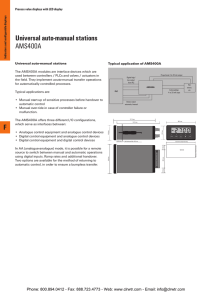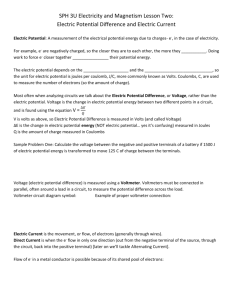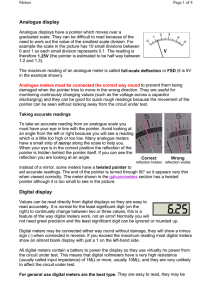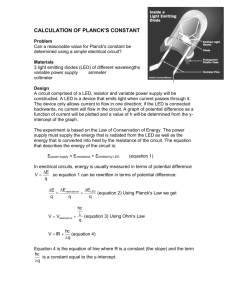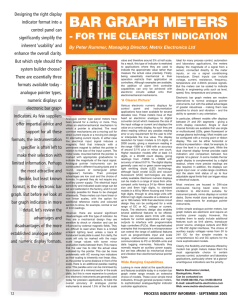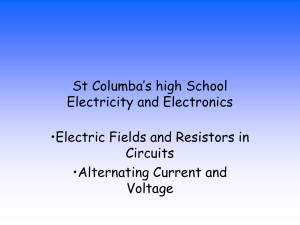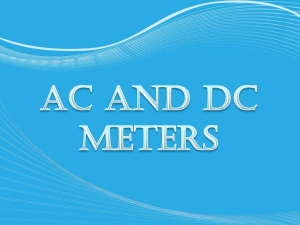Professional Literacy Development, Electrical Measurements
advertisement
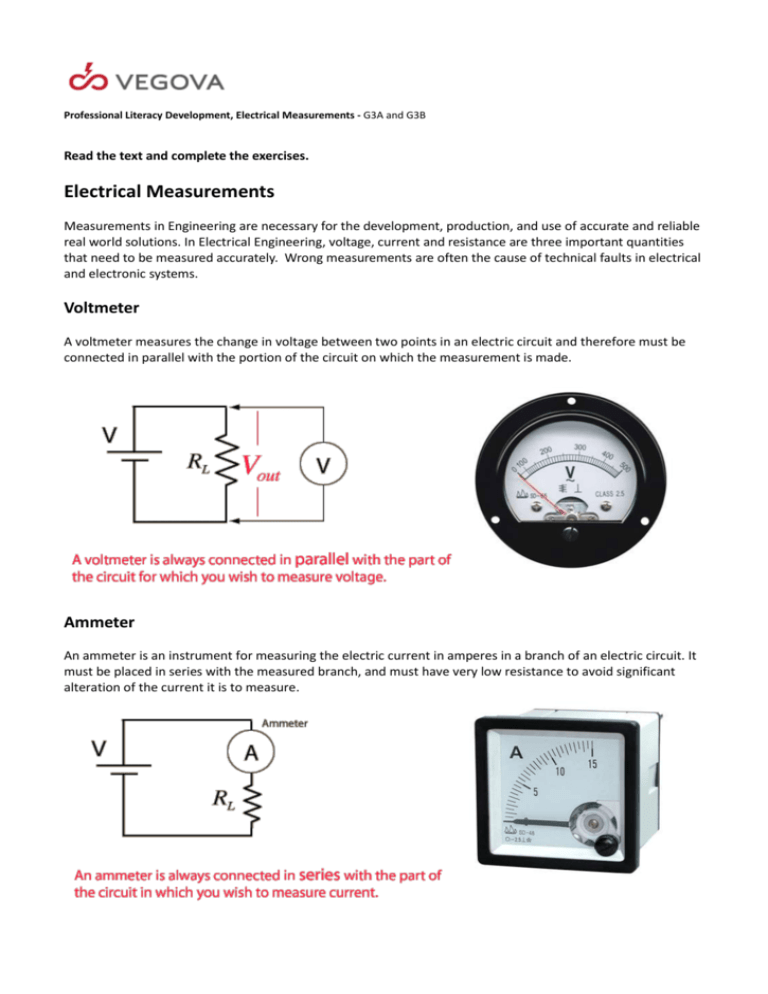
Professional Literacy Development, Electrical Measurements - G3A and G3B Read the text and complete the exercises. Electrical Measurements Measurements in Engineering are necessary for the development, production, and use of accurate and reliable real world solutions. In Electrical Engineering, voltage, current and resistance are three important quantities that need to be measured accurately. Wrong measurements are often the cause of technical faults in electrical and electronic systems. Voltmeter A voltmeter measures the change in voltage between two points in an electric circuit and therefore must be connected in parallel with the portion of the circuit on which the measurement is made. Ammeter An ammeter is an instrument for measuring the electric current in amperes in a branch of an electric circuit. It must be placed in series with the measured branch, and must have very low resistance to avoid significant alteration of the current it is to measure. Ohmmeter (Voltmeter/Ammeter Measurements) The value of electrical resistance associated with a circuit element or appliance can be determined by measuring the voltage across it with a voltmeter and the current through it with an ammeter and then dividing the measured voltage by the current. This is an application of Ohm's law. Analogue displays Meters with analogue displays have a pointer which moves over a graduated scale. They can be difficult to read because of the need to work out the value of the smallest scale division. They are useful for monitoring continuously changing values (such as the voltage across a capacitor discharging) and they can be good for quick rough readings because the movement of the pointer can be seen without looking away from the circuit under test. To take an accurate reading from an analogue scale you must have your eye in line with the pointer. Avoid looking at an angle from the left or right because you will see a reading which is a little too high or too low. Many analogue meters have a small strip of mirror along the scale to help you. When your eye is in the correct position, the reflection of the pointer is hidden behind the pointer itself. If you can see the reflection, it means you are looking at an angle and will record a wrong reading. Digital displays Values can be read directly from digital displays so they are easy to read accurately. It is normal for the least significant digit (on the right) to continually change between two or three values. This is a feature of the way digital meters work, not an error. If you do not need great precision, the least significant digit can be ignored or rounded up. Adapted from: http://hyperphysics.phy-astr.gsu.edu/hbase/hframe.html 1. Comprehension Check 1. Why are measurements necessary in Engineering? To ensure accuracy and reliability 2. How are voltmeters connected? In parallel 3. What are ammeters used for? In series 4. Why must ammeters have low resistance? To avoid significant change in the current to be measured 5. How can Ohm’s law be applied to measure electrical resistance? By measuring the voltage with a voltmeter and current with an ammeter and then dividing the measured voltage by the current 6. What are meters with analogue displays useful for? For monitoring continuously changing values and quick rough readings 7. Give one disadvantage of analogue displays. You need to work out the value of the smallest scale division in order to measure anything. 8. Why do some analogue displays have a small strip of mirror along their scale? To make sure your eye is in the correct reading position 9. Give one advantage of using meters with digital displays. It is easier to read accurate values 2. Technical Vocabulary Translate these key words in Slovene and write down their definitions in English. Key word in English measurement Engineering meter voltmeter ammeter ohmmeter parallel connection series connection analogue digital Key word in Slovene English Definition

